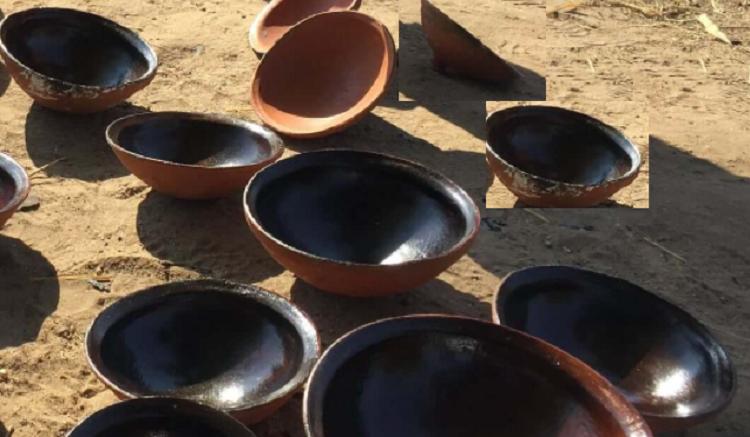The Rathwas, a group of Adivasis live in the forests surrounding Devhat in Chota Udaipur in Gujarat. Their pottery is the Adivasi Mattikam.
An age-old tradition this pottery is a remarkable mixture of the indigenous technology of glazing with lac combined with the large, concave, ochre coloured earthenware dishes for cooking, the inner surface of which is glazed.
Tavlai in Gujarati means bowls and the Adivasis make four kinds that have a similar design and shape. There are slight projections at the four corners which act as handles to lift the hot vessel off the fire. Vegetables are prepared in a paina that is glazed and shaped like the tavlai but is deeper and has a lid to contain the steam and the nutritional content. Another bowl called tavi is flat and used for deep frying. Rotlas are made in the threeka that is the only unglazed vessel made.
The women perform most of the tasks required. They collect the raw material, prepare the clay, create the shape and then fire the product.
They start the process by collecting the black clay and then mixing it in soil and soaking it in water for a couple of hours. The water makes the clay soft and pliable and easy to manipulate. Animal dung is added and the mixture kneaded thoroughly until all the elements integrate. This lump of clay is pounded vigorously until it resembles a large flat pancake which is spread on an inverted matka and dried. As the clay dries it acquires the round shape of the matka. It is then removed and the inner surface rubbed continuously with a stone and left out in the sun. To give colour and polish, red ocher mixed with water is applied and the bowl scoured once more with a stone. This process removes all the porous gaps and makes the utensil water-resistant. The bowls are dried in the sun. Finally they are placed on pieces of wood and covered with thick branches of the tad, a local tree, and fired for about an hour. When the desired colour appears the vessels are transferred on to stones.
While still hot, a stick of lac is rubbed on the surface and the heat of the bowl melts the lac. As it cools the glaze appears.
Gallery
YOUR VIEWS
PRACTITIONERS: INDIA
Access 70,000+ practitioners in 2500+ crafts across India.
BIBLIOGRAPHY
10,000+ listings on arts, crafts, design, heritage, culture etc.
GLOSSARY
Rich and often unfamiliar vocabulary of crafts and textiles.
SHOP at India InCH
Needs to be written.






